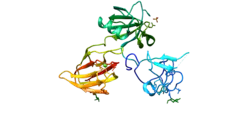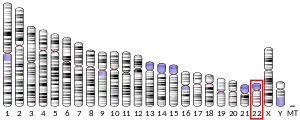| KREMEN1 | |||||||||||||||||||||||||||||||||||||||||||||||||||
|---|---|---|---|---|---|---|---|---|---|---|---|---|---|---|---|---|---|---|---|---|---|---|---|---|---|---|---|---|---|---|---|---|---|---|---|---|---|---|---|---|---|---|---|---|---|---|---|---|---|---|---|
 | |||||||||||||||||||||||||||||||||||||||||||||||||||
| |||||||||||||||||||||||||||||||||||||||||||||||||||
| Identifiers | |||||||||||||||||||||||||||||||||||||||||||||||||||
| Aliases | KREMEN1, KREMEN, KRM1, kringle containing transmembrane protein 1, ECTD13 | ||||||||||||||||||||||||||||||||||||||||||||||||||
| External IDs | OMIM: 609898 MGI: 1933988 HomoloGene: 12935 GeneCards: KREMEN1 | ||||||||||||||||||||||||||||||||||||||||||||||||||
| |||||||||||||||||||||||||||||||||||||||||||||||||||
| |||||||||||||||||||||||||||||||||||||||||||||||||||
| |||||||||||||||||||||||||||||||||||||||||||||||||||
| |||||||||||||||||||||||||||||||||||||||||||||||||||
| |||||||||||||||||||||||||||||||||||||||||||||||||||
| Wikidata | |||||||||||||||||||||||||||||||||||||||||||||||||||
| |||||||||||||||||||||||||||||||||||||||||||||||||||
Kremen protein 1 is a protein that in humans is encoded by the KREMEN1 gene.[5][6] Kremen1 is conserved in chordates including amphioxus[7] and most vertebrate species.[8] The protein is a type I transmembrane receptor of ligands Dickkopf1,[9] Dickkopf2, Dickkopf3, Dickkopf4, EpCAM[10] and Rspondin1.
Function
This gene encodes a high-affinity dickkopf homolog 1 (DKK1) transmembrane receptor that functionally cooperates with DKK1 to block wingless (WNT)/beta-catenin signaling. The encoded protein is a component of a membrane complex that modulates canonical WNT signaling through lipoprotein receptor-related protein 6 (LRP6). It contains extracellular Kringle, WSC, and CUB domains. Alternatively spliced transcript variants encoding distinct isoforms have been observed for this gene.[6]
Kremen1 also has a function in the induction of cell death by apoptosis.[8] This proapototic activity is conditional and depends on the absence of ligand Dickkopf1.[8] These observations led to the classification of this protein as a Dependence Receptor.
A mouse knock out of Kremen1 and its paralog Kremen2 is viable and fertile.[11]
References
- 1 2 3 GRCh38: Ensembl release 89: ENSG00000183762 - Ensembl, May 2017
- 1 2 3 GRCm38: Ensembl release 89: ENSMUSG00000020393 - Ensembl, May 2017
- ↑ "Human PubMed Reference:". National Center for Biotechnology Information, U.S. National Library of Medicine.
- ↑ "Mouse PubMed Reference:". National Center for Biotechnology Information, U.S. National Library of Medicine.
- ↑ Nakamura T, Aoki S, Kitajima K, Takahashi T, Matsumoto K, Nakamura T (Mar 2001). "Molecular cloning and characterization of Kremen, a novel kringle-containing transmembrane protein". Biochim Biophys Acta. 1518 (1–2): 63–72. doi:10.1016/s0167-4781(01)00168-3. PMID 11267660.
- 1 2 "Entrez Gene: KREMEN1 kringle containing transmembrane protein 1".
- ↑ Zhang, Yujun; Mao, Bingyu (2010-09-01). "Embryonic expression and evolutionary analysis of the amphioxus Dickkopf and Kremen family genes". Journal of Genetics and Genomics = Yi Chuan Xue Bao. 37 (9): 637–645. doi:10.1016/S1673-8527(09)60082-5. ISSN 1673-8527. PMID 20933216.
- 1 2 3 Causeret, F.; Sumia, I.; Pierani, A. (2016-02-01). "Kremen1 and Dickkopf1 control cell survival in a Wnt-independent manner". Cell Death and Differentiation. 23 (2): 323–332. doi:10.1038/cdd.2015.100. ISSN 1476-5403. PMC 4716294. PMID 26206087.
- ↑ Mao, Bingyu; Wu, Wei; Davidson, Gary; Marhold, Joachim; Li, Mingfa; Mechler, Bernard M.; Delius, Hajo; Hoppe, Dana; Stannek, Peter (2002-06-06). "Kremen proteins are Dickkopf receptors that regulate Wnt/beta-catenin signalling". Nature. 417 (6889): 664–667. Bibcode:2002Natur.417..664M. doi:10.1038/nature756. ISSN 0028-0836. PMID 12050670. S2CID 4418943.
- ↑ Lu, Huiqiang; Ma, Jun; Yang, Yun; Shi, Wenchao; Luo, Lingfei (2013-03-11). "EpCAM is an endoderm-specific Wnt derepressor that licenses hepatic development". Developmental Cell. 24 (5): 543–553. doi:10.1016/j.devcel.2013.01.021. ISSN 1878-1551. PMID 23484855.
- ↑ Ellwanger, Kristina; Saito, Hiroaki; Clément-Lacroix, Philippe; Maltry, Nicole; Niedermeyer, Joachim; Lee, Woon Kyu; Baron, Roland; Rawadi, Georges; Westphal, Heiner (2008-08-01). "Targeted disruption of the Wnt regulator Kremen induces limb defects and high bone density". Molecular and Cellular Biology. 28 (15): 4875–4882. doi:10.1128/MCB.00222-08. ISSN 1098-5549. PMC 2493355. PMID 18505822.
Further reading
- Gerhard DS, Wagner L, Feingold EA, et al. (2004). "The status, quality, and expansion of the NIH full-length cDNA project: the Mammalian Gene Collection (MGC)". Genome Res. 14 (10B): 2121–7. doi:10.1101/gr.2596504. PMC 528928. PMID 15489334.
- Brandenberger R, Wei H, Zhang S, et al. (2005). "Transcriptome characterization elucidates signaling networks that control human ES cell growth and differentiation". Nat. Biotechnol. 22 (6): 707–16. doi:10.1038/nbt971. PMID 15146197. S2CID 27764390.
- Ota T, Suzuki Y, Nishikawa T, et al. (2004). "Complete sequencing and characterization of 21,243 full-length human cDNAs". Nat. Genet. 36 (1): 40–5. doi:10.1038/ng1285. PMID 14702039.
- Strausberg RL, Feingold EA, Grouse LH, et al. (2003). "Generation and initial analysis of more than 15,000 full-length human and mouse cDNA sequences". Proc. Natl. Acad. Sci. U.S.A. 99 (26): 16899–903. Bibcode:2002PNAS...9916899M. doi:10.1073/pnas.242603899. PMC 139241. PMID 12477932.
- Mao B, Wu W, Davidson G, et al. (2002). "Kremen proteins are Dickkopf receptors that regulate Wnt/beta-catenin signalling". Nature. 417 (6889): 664–7. Bibcode:2002Natur.417..664M. doi:10.1038/nature756. PMID 12050670. S2CID 4418943.
- Dias Neto E, Correa RG, Verjovski-Almeida S, et al. (2000). "Shotgun sequencing of the human transcriptome with ORF expressed sequence tags". Proc. Natl. Acad. Sci. U.S.A. 97 (7): 3491–6. Bibcode:2000PNAS...97.3491D. doi:10.1073/pnas.97.7.3491. PMC 16267. PMID 10737800.
- Dunham I, Shimizu N, Roe BA, et al. (1999). "The DNA sequence of human chromosome 22". Nature. 402 (6761): 489–95. Bibcode:1999Natur.402..489D. doi:10.1038/990031. PMID 10591208.



